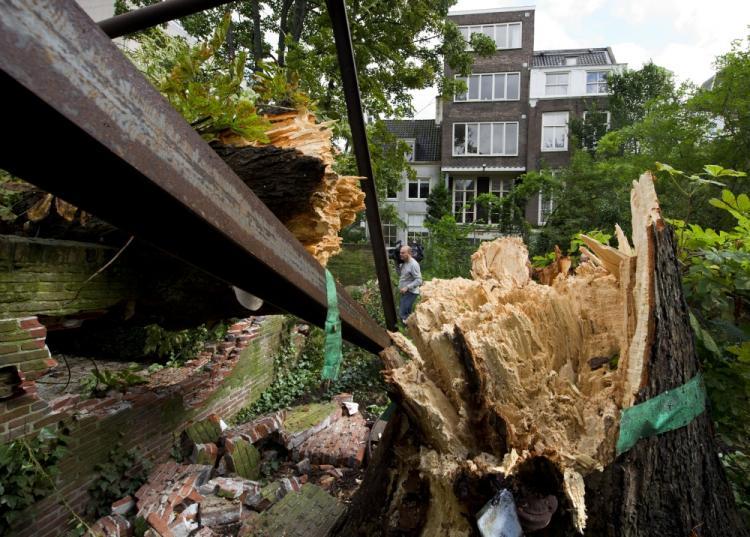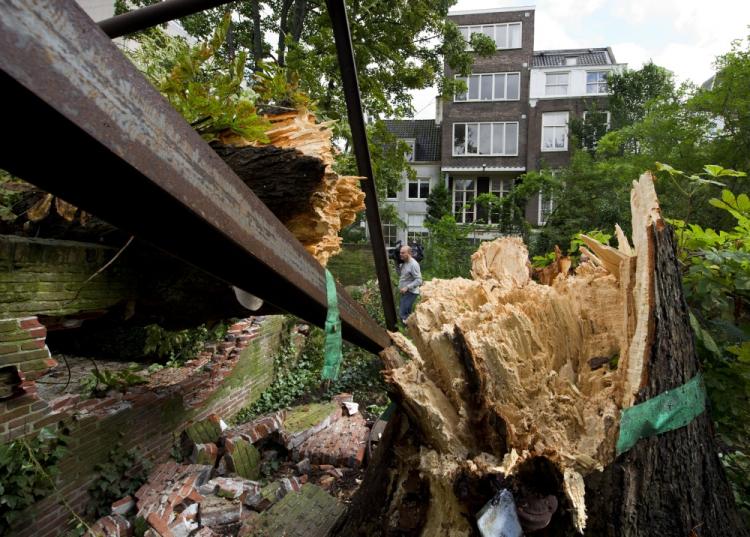A 150-year-old chestnut tree in a courtyard in the center of Amsterdam that gave diarist Anne Frank comfort collapsed on Monday due to fungus and a moth infestation. Different measures had been taken to preserve the tree over several years.
Frank mentioned the tree in “The Diary of a Young Girl,” which the Jewish girl wrote during World War II while she was in hiding with her family from Nazi forces in an annex in Amsterdam.
“Our chestnut tree is in full bloom,“ Frank wrote on May 13, 1944. ”It’s covered with leaves and is even more beautiful than last year.”
Otto Frank, Anne’s father, the only family member who survived the Holocaust, was surprised to read how important the tree was to his daughter when he first read her diary after the war.
“How could I have known how much it meant to Anne to see a patch of blue sky, to observe the seagulls as they flew, and how important the chestnut tree was for her, when I think that she never showed any interest in nature,“ Frank said in a speech in 1968. ”Still, she longed for it when she felt like a bird in a cage. Only the thought of the freedom of nature gave her comfort.”
As one of the millions of Jewish victims of the Holocaust, Anne Frank faithfully wrote her diary entries, which survived the persecution.
Her diary became world-famous, serving as historical documentation of the Holocaust. The diary has been translated into multiple languages and has become one of the world’s most widely read books.
Frank mentioned the tree in “The Diary of a Young Girl,” which the Jewish girl wrote during World War II while she was in hiding with her family from Nazi forces in an annex in Amsterdam.
“Our chestnut tree is in full bloom,“ Frank wrote on May 13, 1944. ”It’s covered with leaves and is even more beautiful than last year.”
Otto Frank, Anne’s father, the only family member who survived the Holocaust, was surprised to read how important the tree was to his daughter when he first read her diary after the war.
“How could I have known how much it meant to Anne to see a patch of blue sky, to observe the seagulls as they flew, and how important the chestnut tree was for her, when I think that she never showed any interest in nature,“ Frank said in a speech in 1968. ”Still, she longed for it when she felt like a bird in a cage. Only the thought of the freedom of nature gave her comfort.”
As one of the millions of Jewish victims of the Holocaust, Anne Frank faithfully wrote her diary entries, which survived the persecution.
Her diary became world-famous, serving as historical documentation of the Holocaust. The diary has been translated into multiple languages and has become one of the world’s most widely read books.






Friends Read Free